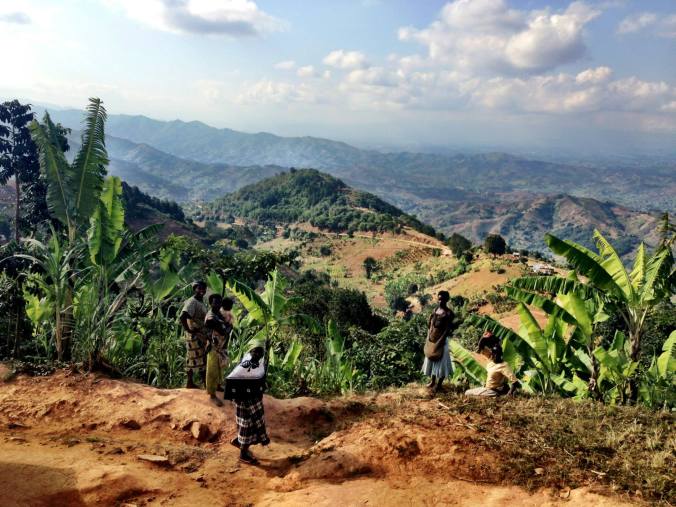By Molly Bergen

Photo: Balzac Brothers
Editor’s note: The 600 billion cups of coffee we consume every year globally start out as berries on trees in the tropics. In the coming years, those trees — and the farmers who harvest and export their beans — will be buffeted by an unpredictable mix of market forces and climate change, threatening the global stability and sustainability of coffee and of the forests and farms that make it possible.
 In response, the Sustainable Coffee Challenge, a new initiative launched in part by Conservation International (CI), aims to make coffee the world’s first completely sustainable agricultural commodity. The initiative, still in its formative stages, will begin to take shape at the upcoming World Coffee Conference in Ethiopia.
In response, the Sustainable Coffee Challenge, a new initiative launched in part by Conservation International (CI), aims to make coffee the world’s first completely sustainable agricultural commodity. The initiative, still in its formative stages, will begin to take shape at the upcoming World Coffee Conference in Ethiopia.
With major organizations adding momentum to the effort, the next step is providing direction, as Bambi Semroc, a CI senior strategic adviser, explains in the following interview. With forecasts of growing demand and a changing climate, she says, the time to protect this crucial crop is now.
Question: What is significant about how coffee is grown?
Answer: Over centuries, coffee has become a staple in nearly every corner of the world. People drink about 600 billion cups of coffee every year. It’s also a $22 billion global industry that provides essential income for millions of people across the sector, including over 25 million smallholder farmers who also serve as important stewards for the world’s tropical forests.
And demand is growing fast in huge markets like China and India. This growing demand, when coupled with climate change, could place pressure on natural resources, and tropical forests in particular. In addition, some producers are looking for more lucrative agricultural opportunities outside of coffee, which could lead to divestment or abandonment of some farms in the future.
Unless we are able to increase productivity on existing coffee farms and ensure the long-term prosperity of coffee producers, we will lose critical natural habitat in coffee-producing regions. Loss of these natural forest areas has direct impacts on freshwater quality and the survival of key species that depend on the coffee landscape for survival.
The global community needs to spark greater demand for sustainable coffee — not just for the benefit of farmers and their families, but also for the future of coffee itself.

Climate change has become one of the primary concerns regarding sustainability and coffee. (© Conservation International/photo by Tory Read)
Q: How is a sustainable product even possible?
A: Achieving our vision will require a combination of more ambitious commitments to sustainability over time and more actors within the coffee sector making commitments. Only through such a groundswell can we transition sustainability from an add-on program within the sector to an integrated way of producing and sourcing coffee that becomes the norm. To spark these commitments, we first need to understand how far the coffee sector has come in in the journey toward sustainability, and to make sure we’re on the right path and are learning from — and expanding — successful initiatives.
To this end, participants in the Challenge are working to define a common set of “North Star” elements that help guide us. The North Star has served as a beacon for sailors lost in an ocean, and by defining one for the coffee sector we can better steer toward common outcomes and track our progress. We’ve defined three North Star goals for the coffee sector: the well-being and prosperity of farmer livelihoods; the conservation of ecosystems that support coffee production; and a sustained supply of coffee to meet current and future demand.
Each sustainability journey will begin with a single step, and we recognize that the various actors are at different stages in their journeys. We’re not trying to judge the progress anybody is making. Instead, we will provide an open-source portal where anyone tied to the coffee industry — countries, companies, NGOs — can publicly state their commitments and report on their progress as part of a community committed to sharing experiences and lessons learned with others.
Q: How has the Sustainable Coffee Challenge progressed so far?
A: We started back in December with 18 participating entities signing onto the Challenge. Today we have grown to 35 organizations representing companies that buy and sell the coffee, as well as NGOs, donors such as the Multilateral Investment Fund and USAID, and certification bodies. All these actors can make commitments and investments that drive progress on particular issues related to coffee production, such as forest restoration on degraded farmlands, or the empowerment of women farmers, and so on.
Since December, we launched four working groups to define a road map and agenda for the SSC in the coming years: commitments, sustainability framework, governance and communications. Each group was made up of volunteers from the participating organizations. The first group was tasked with understanding the range of sustainability commitments being made by actors in the coffee sector. The second group is working collaboratively to develop a framework that will lay out what exactly we mean by “sustainability.” The third is focused on governance of the Challenge — what it looks like and how it should be managed. And the fourth will make sure we have a clear communications plan.
Next week at the World Coffee Conference in Addis Ababa, Ethiopia, we’ll be presenting the road map that has emerged from these working groups.

Mursal Sutami Lubis, 37, harvests coffee fruit from his arabica coffee trees in Simpang Banyak village, Mandailing Natal, North Sumatra. (© Conservation International/photo by Tory Read)
Q: How can this initiative help coffee adapt to climate change?
A: There is a lot of concern that climate change will affect the suitability of current coffee-growing regions through higher temperatures and more variable rainfall. Our initiative can help by driving investment toward programs working to enhance the adaptive capacity of coffee, producer communities and ecosystems in those places where climate change is expected to have the greatest impacts.
As with sustainability more generally, there are many paths to climate resilience within the coffee sector, including training on better farming practices, diversifying crops planted, and planting new climate-resilient varieties of coffee. All of the actions and investments need to demonstrate how they will contribute to our “North Star” goals. By understanding which actors are committing to climate adaptation, we can track progress and drive additional commitments and investments into programs that demonstrate effectiveness.
Q: What is the toughest part of this process?
A: The biggest challenge that I see is the pace of it all — the need to keep it moving and produce results in a short time frame.
The sector will likely reach a critical point around 2030, when climate change impacts intensify, so we have less than 15 years to reach our goal. At the same time, we need to make sure we don’t move so quickly that we leave potential partners behind; the more organizations we can involve, the greater chance of creating a sustainable coffee sector.
Bambi Semroc is a senior strategic advisor in Conservation International’s Center for Environmental Leadership in Business. Molly Bergen is the senior managing editor of Human Nature, where this blog post was originally published.
To be sustainable at current stage where the coffee price at low level very tough and the idea will not workable. Poor farmers in Ethiopia facing shortage cash to buy basic needs, since per kg price this year is very low and coffee farmers convinced that the coffee tree no more feed the family of coffee farmers, thus better to cut the tree coffee with shedding tree and replace with crop that feed his family.
These means we are going to face another challenge to our environment and climate problem.
Thus, let establish an organization that give financial, basic food,clothes support for the poor families in coffee growing area until price recover.
All coffee community is responsible for support of farmers as most of us running to get profit and governments always getting billions of Dollars tax income from big multinational where the source is poor coffee farmers.
Nobody now concern for farmers even in future and do not help also the coffee farmers but let us concerns for our environment and climate change in order it to live on this earth.
Negash Hussen
From Ethiopia.
LikeLike